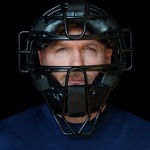The Maryland Court of Appeals has two big cases in 2009—a lead paint case and a medical malpractice claim – in which plaintiffs seek a path around Maryland’s non-economic damages cap after big jury verdicts. Plaintiffs lost Round 1 today. [2019 update: And Round 2, Round 3, and so on. This is dead. The nutshell of everything you read below is this: the cap applies across the board to lead paint cases and any other tort case. Exclamation point.]
Green v. NBS
 In Green v. NBS, the Plaintiffs’ lead paint lawyers argued that the statutory cap on non-economic damages in Maryland does not apply to personal injury claims allowed by the Consumer Protection Act. Specifically, and creatively, the Plaintiffs claimed that a lawsuit brought under the CPA is not a “personal injury action” and the Maryland legislature did not want a cap on deceptive practice covered by the CPA.
In Green v. NBS, the Plaintiffs’ lead paint lawyers argued that the statutory cap on non-economic damages in Maryland does not apply to personal injury claims allowed by the Consumer Protection Act. Specifically, and creatively, the Plaintiffs claimed that a lawsuit brought under the CPA is not a “personal injury action” and the Maryland legislature did not want a cap on deceptive practice covered by the CPA.
Specifically, the plaintiffs pushed the theory that the Maryland non-economic damage cap applied only to common law tort claims and not a statute like the CPA. The intellectual unpinning of this argument was that the CPA was a statute that was not just about tortious conduct.
I like the argument right? The Maryland high court, however, found that the Plaintiffs’ CPA claim is a personal injury action and that CJ § 11-108 applies to a proceeding in which a consumer asserts a claim for money damages to compensate for injuries sustained because of a Consumer Protection Act violation. The court’s reasoning is, essentially, that if it looks like a personal injury claim and talks like a personal injury claim, then it is a personal injury claim.
The court stated, discussing the general damages cap in C.J. §11-108, that
Both businesses and individuals need insurance for economic protection against suits seeking non-economic damages regardless of whether the lawsuits are based on acts of commission or omission that were torts at common law or are based on conduct that breaches a duty imposed by a statute or by [the Maryland] constitution.
Two More Arguments
The plaintiffs’ lawyers made two other arguments. The first was DOA: the cap violates the Maryland constitution. Again, the Plaintiffs’ lawyers tried to put a CPA spin on the old argument, arguing that a cap on a CPA claim violates the prohibition against the enactment of “special laws” in the Maryland Constitution. But the argument went nowhere with the court.
Finally, the Plaintiffs argued that even if the cap applies; it entitles Plaintiffs to a judgment in the amount of $530,000 rather than $515,000 because the exposure to lead-based paint continued to arise after October 1, 1996. The plaintiffs’ lawsuit and expert testimony were at odds with this contention. Still, I give Plaintiffs’ lawyers an “A” for creative effort in trying to get another $15,000 for their clients.
Continue reading
The Maryland Court of Appeals has signed off on some modifications to the Maryland Rules. Of particular interest to both lawyers and clients is new Maryland Rule 16-110. This recent rule addresses the crucial issue of our day of whether you can bring a cell phone into court in Maryland. The short answer is yes. The long answer can be found here on page 18.
 Maryland Injury Law Center
Maryland Injury Law Center







